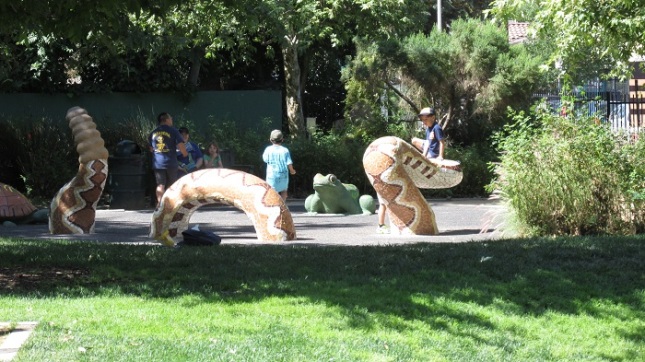
How much alcohol at LA City parks is too much alcohol? It appears that the City of LA doesn’t believe there’s any such thing as too much alcohol at city parks. At the April 20 meeting of the Board of Recreation and Park Commissioners, one of the agenda items was a proposal to revise the Recreation & Parks Alcoholic Beverage Policy.
The current policy says only beer and wine can be served at public events in LA City parks, and it limits the number of events where alcohol is served to no more than one event per park per year. The proposed revisions would allow the sale of a full line of alcoholic beverages and remove any limits on the number of events where alcohol is served.
Does that really seem like a good idea? Opening up our parks to an unlimited number of events that offer booze to attendees? There are so many problems with this it’s hard to know where to begin.
First, while the revised policy requires that event organizers hire security, the security is only going to be dealing with issues at the site of the event. What happens when people who’ve had too much to drink leave the area and start wandering around the park? Or get into their cars and start driving home? Just last year a cyclist riding through Griffith Park was hit and killed by a motorist. Police said the driver appeared to have been drinking.
Second, allowing more events that serve alcohol will likely bring a lot more people to LA’s parks, but the Department of Recreation & Parks hasn’t been able to properly maintain these important resources for years. Sadly, Rec & Parks has been the victim of severe budget cuts, and has been struggling without proper staffing. Increasing the number of visitors without increasing the budget for Rec & Parks just means the Department will be more burdened than ever.
And then there are the environmental issues. If increasing the number of events that offer alcohol would increase the number of visitors to LA’s parks, it seems likely that there would be significant impacts to the environment. This is especially true if the policy change means more live music festivals, which is almost certainly the case. There’s no sign that Rec & Parks has done any kind of environmental review, and there’s no way they could claim that this policy change wouldn’t have any impacts.
One impact would be traffic. I know our leaders like to pretend that nobody drives any more and everybody takes transit, but if you believe that’s true, you should check out the full parking lot and the cars lining the street on the periphery of the LA State Historic Park. You can see the same at many of LA’s other parks. Unfortunately, the vast majority of Angelenos still drive cars to get where they want to go.
Another impact is solid waste, and again, more music festivals would be a particular problem. The City will tell you that all the empty aluminum and plastic containers discarded at these events can be recycled, so there’s no impact to the environment. Sure, they can be recycled, but they’re often not, and the City has been struggling for years to comply with a State mandate that it divert 50% of its solid waste to recycling. More music festivals would also likely have significant impacts on habitat and wildlife, and these impacts should also be assessed.
One of the motivations for this policy change may be to generate more revenue for Rec & Parks, and the Department certainly needs more funding. But the change will probably result in higher costs, too, and there’s no sign that this has been analyzed. Before even considering increasing the number of events that offer alcohol, the Department should do a study to analyze whether increased revenue would offset the increased costs.
There may be good arguments for increasing the number of events that offer alcohol at LA’s parks, but lifting the current caps to allow an unlimited number, especially if serving a full line of alcohol is allowed, does not make sense. It might make sense to allow a small increase in the number of events with alcohol. Or it might make sense to designate certain parks that could host these events. Rec & Parks should study a few different options, and weigh the benefits against the costs. They also need to do environmental review.
If you’d like to offer input on the proposed revisions to Rec & Parks’ Alcoholic Beverage Policy, you can send an e-mail to the Board of Commissioners:
RAP.COMMISSIONERS@LACITY.ORG
You might also copy General Manager Jimmy Kim and his Administrative Assistant, Desiree Ramirez:
Jimmy.Kim@lacity.org
Desiree.Ramirez@lacity.org
It also couldn’t hurt to contact your LA City Councilmember to let them know how you feel.
There may be ways to update the current policy that would provide benefits, but just opening the door to an unlimited number of events with alcohol is not a good idea.





















































































